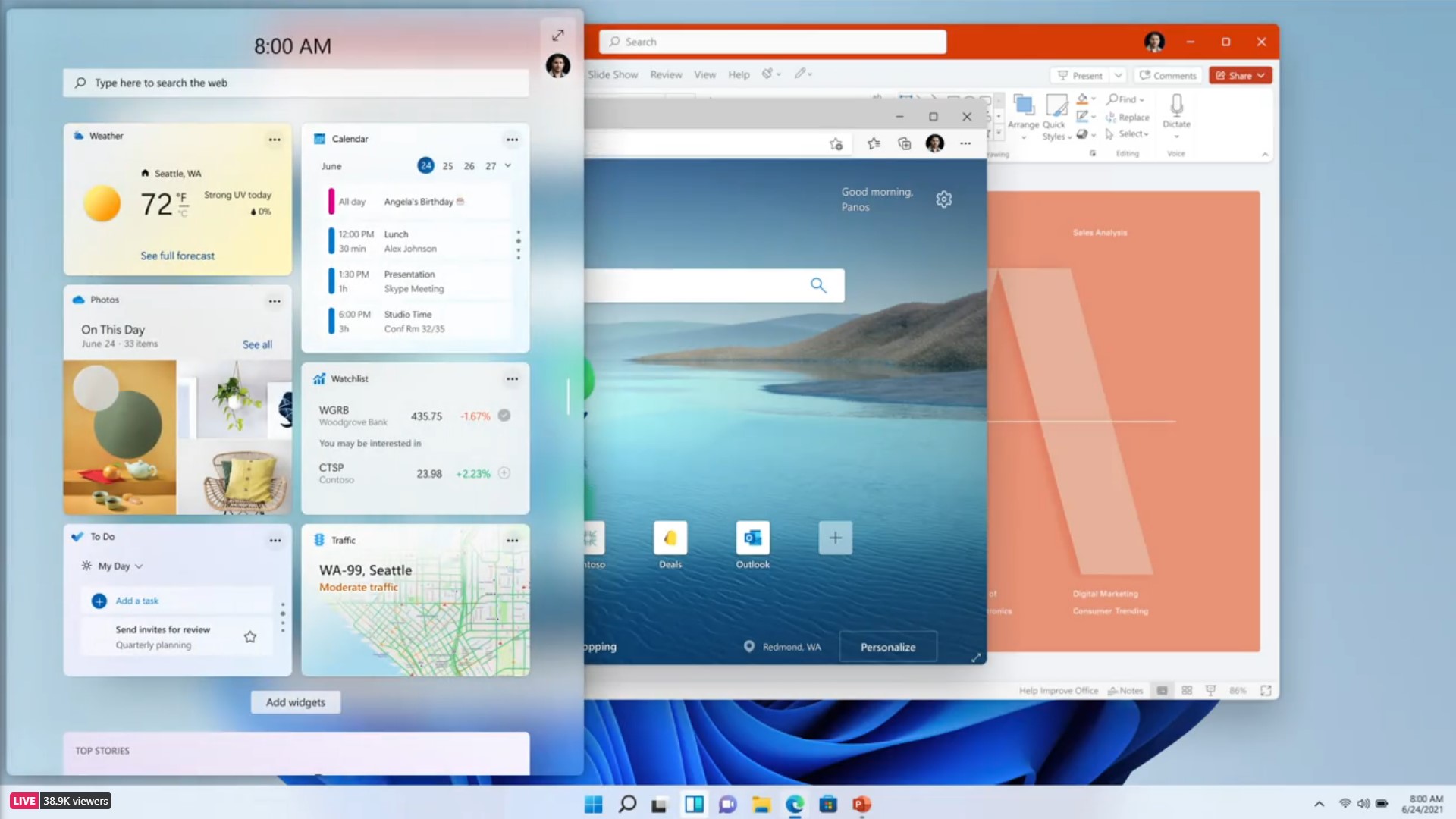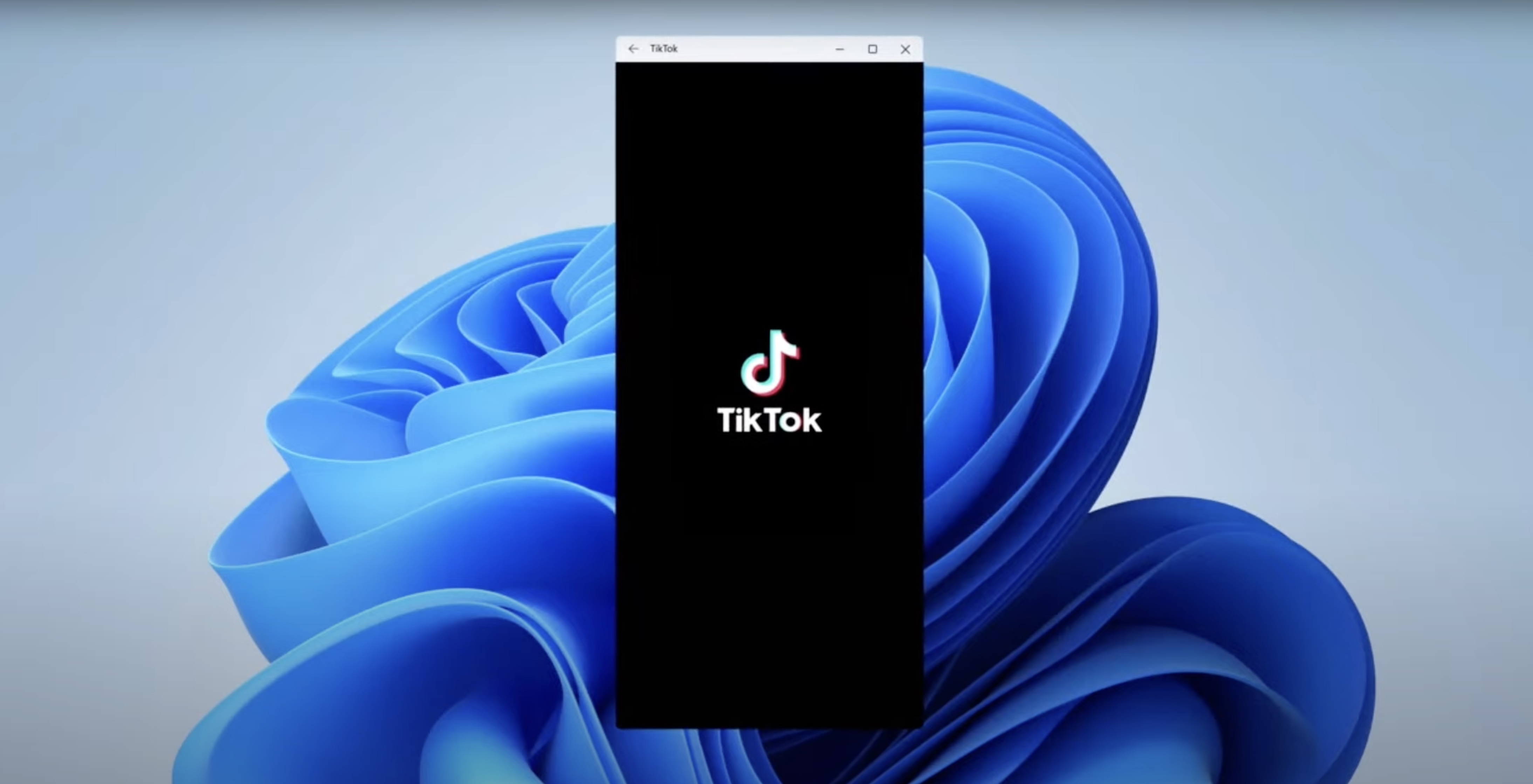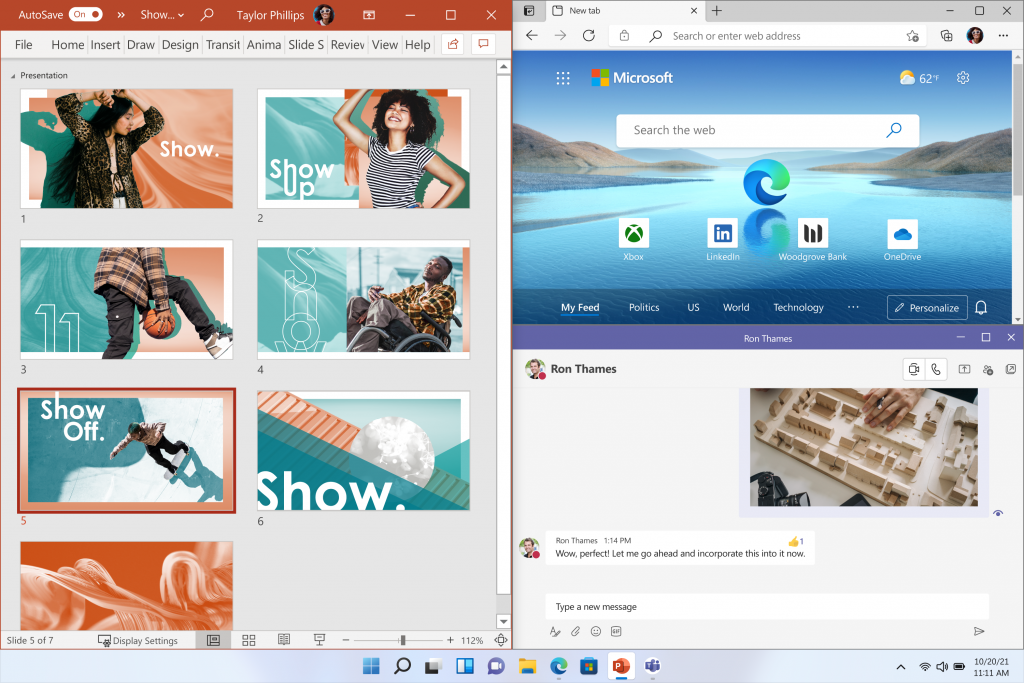
After weeks of leaks and hype, Microsoft today officially announced Windows 11, the next version of its desktop operating system. While the company may have once said that Windows 10 was the last version of Windows, forgoing major point launches for a regular cadence of bi-annual upgrades, but it clearly believes that the changes — and especially the redesigned user interface — in this update warrant a new version number.
Microsoft plans to release Windows 11 to the general public by the holidays, so we can probably expect it sometime around late November. Before that, we’ll likely see a slew of public betas, starting next week. It’ll be a free update to Windows 10 users.
If you followed along with the development and eventual demise of Windows 10X, Microsoft’s operating system with a simplified user interface for dual- and (eventually) single-screen laptops, a lot of what you’re seeing here will feel familiar, down to the redesigned Start menu. Indeed, if somebody showed you screenshots of Windows 11 and early previews of Windows 10X, you’d have a hard time telling them apart.

Image Credits: Microsoft
As Microsoft Chief Product Officer Panos Panay noted in today’s announcement, the overall idea behind the design is to make you feel “an incredible sense of calm,” but at the same time, the Windows team has also worked to make it a lot faster. Windows Updates, for example, are supposed to be 40 percent faster, but Panay also noted that starting up your machine and even browsing should feel much faster.

Image Credits: Microsoft
One surprise feature here is that you will now also be able to run Android apps on Windows. These apps will seem like native apps that can be integrated into the taskbar, for example. These apps will be in the redesigned Microsoft Store, via — you want to sit down for this — the Amazon Appstore. Didn’t see that coming, did you?

Image Credits: Microsoft
Besides the new user interface, which makes copious use of translucency and shadows and new features for touch screen users, one of the core new UI features is what Microsoft calls Snap Layouts, which pops up a small widget when you hover over the icon that maximizes your window to allow you to move the window to any corner, something that previously involved dragging your window to the corner of your screen (which was often hard when you used multiple screens).

Image Credits: Microsoft
Another major new feature is that Windows 11 will come with Teams built-in from the outset. It’s no secret that Microsoft is bullish when it comes to Teams. It recently launched the consumer version of Teams, so it makes sense to now bring it to Windows 11, too. It’s worth noting that Microsoft never brought Skype to Windows, so this is quite a change, but it basically makes Teams Microsoft’s Facetime.

Image Credits: Microsoft
If you saw the Windows 11 leaks, you know that web widgets are one of the more visible new features. “Windows widgets is a new, personalized feed, powered by AI, serving you curated content,” Panay said. Widgets aren’t a new thing, of course, and in many ways, they make up for the removal of Live Tiles in the Start Menu. They’ll also give developers a new canvas to surface information from their applications.

Image Credits: Microsoft
This wouldn’t be a new Windows without Microsoft talking about gaming, of course. The company argues that Windows 11 will “deliver the best PC gaming experience yet,” but what else would they say?

Image Credits: Microsoft
Microsoft promises better graphics thanks to Auto HDR, a feature that’s already available on Xbox. Thousands of games, Microsoft says, will be automatically enhanced with Auto HDR on Windows 11. In addition, the company argues that thanks to a new storage API in Windows 11, games will be able to quickly load game assets without bogging down the CPU (but it’ll take a compatible PC to do so). Oh, and Microsoft’s Game Pass subscription will be built right into Windows 11, too.

Image Credits: Microsoft
As expected, there will be a new Microsoft Store, too, which Panay said was built from the ground up for speed (because speed was what people were complaining about?). Panay argues that Microsoft wants to help developers bring more of their applications to the store. One area where Microsoft is obviously trying to set itself apart from Apple is that it will allow developers to use their own commerce engine in their apps and that Microsoft will not take any cut from that.

Image Credits: Microsoft
Indeed, Microsoft CEO Satya Nadella said that he wants developers to have the opportunity to build their own platforms on Windows 11. “Windows is the stage for the world’s creation,” he said. “With this new version of Windows, we are unleashing the innovation and ingenuity inherent in each of us. […] Today, the world needs a more open platform – one that allows apps to become platforms in their own rights. Windows is the platform where things that are bigger than Windows can be born — like the web. That’s our aspiration with Windows 11.”

